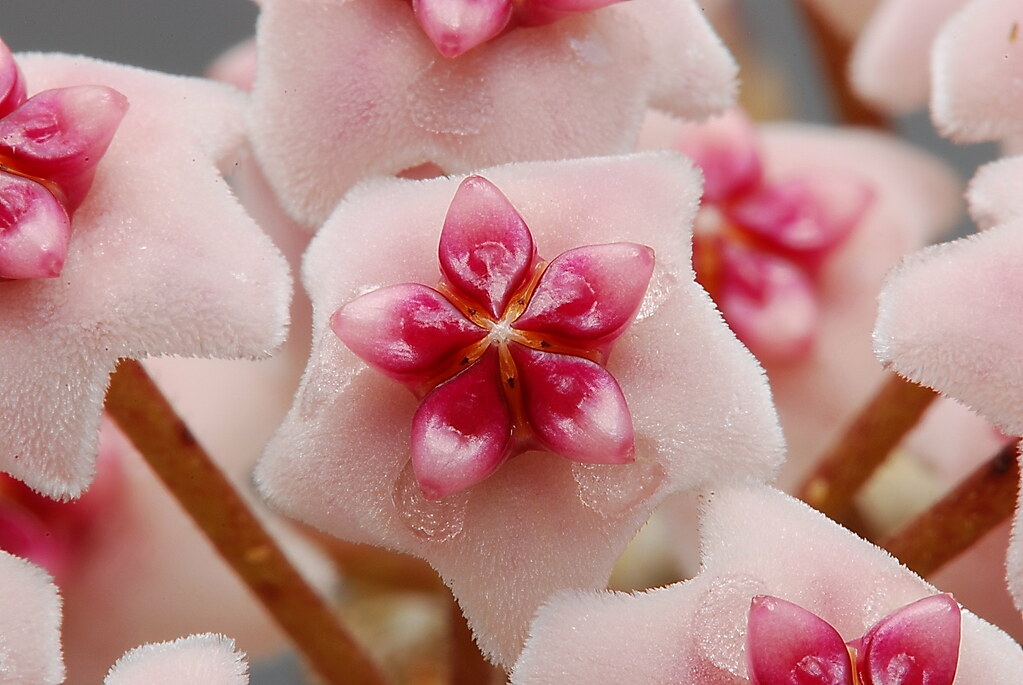Hoya Obovata, a captivating member of the Hoya genus, is celebrated for its thick, round, and often variegated leaves. These attractive leaves, coupled with its relatively easy-going nature, make it a popular choice among houseplant enthusiasts. The splashy green leaves, often adorned with silver or white specks, can grow quite large, giving the plant a bold and exotic appearance.
Native to parts of Southeast Asia, including Thailand and Indonesia, Hoya Obovata thrives in tropical and subtropical climates. Its natural habitat influences the care it requires when grown indoors. Known for its clusters of small, star-shaped pink flowers, the Hoya Obovata can bloom when given proper care, further enhancing its appeal.
In addition to its aesthetic charm, Hoya Obovata is also appreciated for its air-purifying qualities. It’s a plant that can enhance the ambiance of a room while contributing to a healthier living environment. Below is an extensive guide to caring for this beautiful plant.
| Attribute | Details |
|---|---|
| Common Names | Hoya Obovata, Round-Leafed Hoya |
| Botanical Name | Hoya Obovata |
| Family | Apocynaceae |
| Plant Type | Evergreen perennial |
| Mature Size | Up to 5 feet |
| Sun Exposure | Bright, indirect light |
| Soil Type | Well-draining soil |
| Hardiness Zones | 10-11 |
| Native Area | Southeast Asia |
Hoya Obovata Care
Hoya Obovata is relatively easy to care for and can be a delightful addition to any home or office. The plant thrives in bright, indirect light, and requires well-draining soil to avoid root rot. Watering should be moderated, and the plant’s native tropical climate should be mimicked as closely as possible in terms of temperature and humidity.
Consistency is key when caring for Hoya Obovata. Sudden changes in temperature or lighting conditions can cause stress to the plant. Ensuring a stable environment and following a consistent watering schedule will lead to a happy and healthy Hoya Obovata.
Light Requirement for Hoya Obovata
Bright, indirect sunlight is the ideal lighting condition for Hoya Obovata. Direct sunlight can burn the leaves, so a shaded spot near a south or west-facing window is often perfect. Adjusting the light exposure seasonally may be necessary to provide consistent illumination.
Soil Requirements for Hoya Obovata
A well-draining soil mixture, often composed of peat, perlite, and some organic matter, will support healthy growth. Ensuring that excess water can easily escape prevents the roots from sitting in moisture, which can lead to root rot.
Water Requirements for Hoya Obovata
Hoya Obovata prefers to be kept slightly moist but not wet. Watering should be done when the top inch of soil feels dry to the touch, and the amount should be reduced during the winter months when the plant is not actively growing.
Temperature and Humidity
A temperature range of 60-80°F (15-27°C) is ideal for Hoya Obovata. Humidity levels should be kept around 40-60%. If the air is too dry, a humidifier or misting the leaves can help maintain proper moisture levels.
Fertilizer
A balanced, water-soluble fertilizer applied every 4-6 weeks during the growing season will encourage robust growth. Avoid over-fertilizing, as this can lead to mineral buildup in the soil.
Pruning Hoya Obovata
Pruning Hoya Obovata is usually done for aesthetic reasons or to remove dead or damaged growth. Gentle pruning can be performed at any time, being careful not to remove too many leaves, as this may affect the overall health of the plant.
Propagating Hoya Obovata
Propagation can be done through stem cuttings or leaf cuttings. A healthy stem or leaf placed in water or a well-draining soil mix will root and eventually grow into a new plant.
How To Grow Hoya Obovata From Seed
Growing Hoya Obovata from seed can be challenging and is less common than other propagation methods. Seeds should be sown in a well-draining mix and kept in a humid environment. Patience is required, as germination can be slow.
Common Pests & Plant Diseases
Spider Mites
Treat with insecticidal soap or regular misting.
Mealybugs
Use neem oil or manually remove with a cotton swab dipped in alcohol.
Common Problems With Hoya Obovata
Yellowing Leaves
Often caused by over-watering or poor drainage. Adjust watering schedule and ensure proper soil mixture.
Stunted Growth
This could be a result of under-fertilizing or low light. Assess and adjust accordingly.
Pro Tips
- Provide consistent bright, indirect light.
- Water only when the top inch of soil is dry.
- Use a well-draining soil mixture.
- Maintain a stable temperature and humidity level.
- Be patient; Hoya Obovata grows slowly but is worth the wait.




